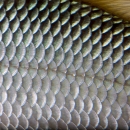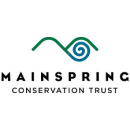States
North CarolinaFor nearly 100 years, the Ela Dam has been smothering the streambed downstream and severing the Eastern Band of Cherokee Indians from their ancestral waters and many of their first foods. An accidental release of sediment from the dam in 2021 further exacerbated the problem and prompted local partners to act. Removing the Ela Dam will eliminate the only physical barrier preventing the Oconaluftee River from flowing freely and reconnect 549 miles of open water that benefit rare and federally endangered species. Increased habitat and spawning migration will restore the population of sicklefin redhorse, which was once a vital and thriving fishery of the Cherokee. Dam removal and water quality improvements could also increase potential for development of river-based recreation, including increased fishing access, increased tubing and paddling, and snorkeling.
Project Quick Facts:
- Location: North Carolina
- Federal Investments to Date: $6,000,000
- Non-Federal Investments to Date: $10,000,000
- Total Restoration Costs: $20,000,000
- Type of Barriers: Dam
- Number of Barriers: 1
- Stream Miles Reopened: 549
- Project Lead: Mainspring Conservation Trust
- Non-Federal Partners Include: Eastern Band of Cherokee Indians, American Rivers, State of North Carolina, American Whitewater, Northbrook Hydro, Southern Environmental Law Center, Swain County Soil and Water Conservation District
- Federal Agencies Invested to Date: U.S. Fish and Wildlife Service, U.S. Forest Service, Department of Energy’s Water Power Technology Office
Removing Barriers to Success
In order to protect downstream habitat and species, the project requires consistent activity once it begins. Requiring only $4 million more dollars, full funding would allow for the removal of the dam as well as sediment excavation and removal, as well as streambank restoration necessary to protect and restore downstream habitat.
The Importance of Transformational Fish Passage Projects
This project is one of over 70 grand-scale, community-centric restoration projects, identified by the Federal Interagency Fish Passage Task Force, that not only rejuvenate ecosystems but also bolster the climate resilience and economies of communities across the country. Learn more about these ground breaking projects in our Reviving Rivers, Reconnecting Communities story map.
The National Fish Passage Program combines technical expertise with a track record of success.
Implemented primarily through the Service's Fish and Wildlife Conservation Offices, the National Fish Passage Program provides financial and technical assistance to partners across the country. Since 1999, the program has worked with over 2,000 local communities, Tribes, and private landowners to remove or bypass over 3,400 barriers to fish passage fish passage
Fish passage is the ability of fish or other aquatic species to move freely throughout their life to find food, reproduce, and complete their natural migration cycles. Millions of barriers to fish passage across the country are fragmenting habitat and leading to species declines. The U.S. Fish and Wildlife Service's National Fish Passage Program is working to reconnect watersheds to benefit both wildlife and people.
Learn more about fish passage and reopen access to over 61,000 miles of upstream habitat for fish and other animals. Staff have expertise in fish migration and biology as well as financial, engineering, and planning assistance to communities, Tribes, and landowners to help them remove barriers and restore rivers for the benefit both fish and people.
Fish passage project proposals can be initiated by any individual, organization, government, or agency. However, proposals must be submitted and completed in cooperation with a Fish and Wildlife Conservation Office. (Please note that fish passage projects being used for federal or state compensatory mitigation or required by existing federal or state regulatory programs are not eligible for funding through the National Fish Passage Program.)
CONTACT A FISH PASSAGE COORDINATOR IN YOUR AREA TO GET STARTED.



